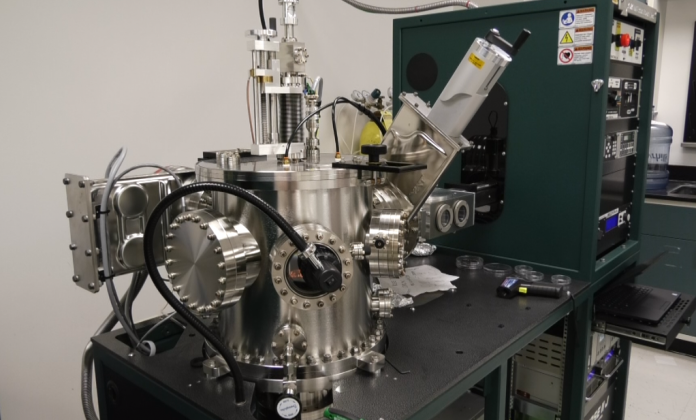
Researchers at UCF have been working on the development of a new infrared detector that requires less maintenance and is more cost effective.
“The energy of infrared light is very small, so typically you need a cooling to get the temperature down to 77 Kelvin to make the infrared light, but that is often bulky and problematic to carry a liquid nitrogen tank,” said Debashis Chanda, head researcher and associate professor in UCF’s NanoScience Technology Center.
Studying graphene, and the way it reacts, was the key ingredient to developing this detector, he said.
“We have made the most sensitive detector based on graphene in the infrared domain yet,” said Sayan Chandra, researcher in the NanoScience Research Center.
With the use of graphene, these new detectors will not need a cooling system in order to function. Graphene is an atomic scale of carbon atoms. With the use of graphene, the use of these detectors is much simpler.
“What’s important is that it is lightweight, and it is cheaper relatively because you are not using a cooling system which can add up to the cost,” Chandra said.
Chandra said one of the most important things is being able to choose which color of light you see.
“The biggest advantage graphene has, in my opinion, is frequency selectivity,” Chandra said.
This technology could one day be used in the U.S military for night vision goggles, Chandra said.
“Infrared detection is essentially the platform based on which all of the night vision goggles and security cameras are based off of,” Chandra said.
The research was funded by the U.S. Department of Defense as a Defense Advanced Research Projects Agency project. DARPA projects and funds are awarded funding and given to those who present ideas and research on topics in emerging technologies for use by the military, according to the Department of Defense.
The project has taken over three and a half years, but both researchers said they finally have verified the research they found.
There are multiple other uses for this new discovery. Commercial use could be a big component of getting this on the market. It could be used in home inspection to test for toxic gases as well to test if there is a damp spot behind a wall.
Another use could be in outer space. Whether it be used in space, or on the ground here to study space is to be determined.
“For space application the main important application would be to study galaxies with now being able to detect various photons, or the color of the light much more precisely from space,” Chanda said.
The next step for the researchers at the NanoScience Technology Center is to work on the development of it and the packaging.
“The packaging, the electronics to drive it and read it efficiently, and the software to control it are all the steps needed to make it more commercially viable,”Chanda said.
Now they will continue to look for funding in order to turn this finished research into a product that is available for use.



